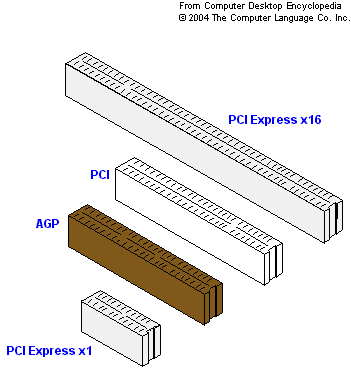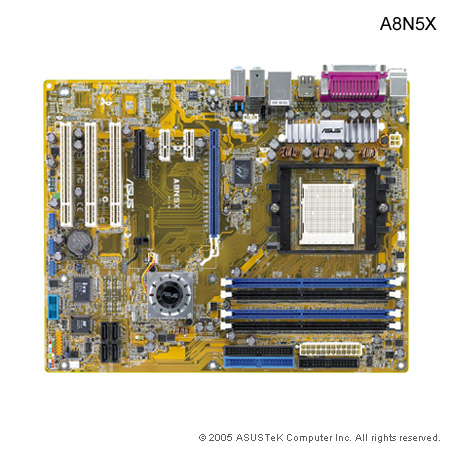Expansion Slots
Peripheral Component Interconnect (PCI) Express
The PCI Express (PCI-E) expansion slot standard was introduced in 2002 to replace PCI and AGP expansion slots (below). The PCI-E uses a high-speed serial bus to transmit small pieces of data in succession and a switched communications pathway, allowing multiple devices to talk simultaneously. A single PCI-E channel can transmit .5 GB/s of data in each direction, and up to 32 channels can be bound in one slot.
For more information:
http://arstechnica.com/articles/paedia/hardware/pcie.ars
PCI
The PCI was introduced in 1992 and doubled both the width (to 32 bits) and speed (to 33 MHz) of the previous expansion slot type, ISA. PCI was a parallel, shared bus design – it used multiple wires to transmit a single large data chunk at one time, and only one device can talk at a time. Later revisions allowed for a 64 bit data path and at a speed of 66 MHz.
Advanced Graphics Port (AGP)
In 1996, AGP was created to give a 3d graphics card fast, direct access to the CPU. It was a 32-bit parallel bus that started out at 66 MHz (AGP-1x) and eventually scaled up to 266 MHz (AGP-8x).

Figure 1: Slot Comparison

Figure 2: A motherboard with a variety of expansion slots: three PCI, one PCI Express-x4,
two PCI Express-x1, one PCI Express-x16
Laptop Expansion Slots
Since none of the previous expansion cards will fit in a laptop, a group called PCMCIA established standards for expansion slots for laptops in 1990. The expansion cards for laptop slots are the size of a credit card, only thicker.
Historical:
ExpressCard
In 2003, the PCMCIA standard was the ExpressCard. They can use either a single channel of PCI-E or USB 2.0.
CardBus
In 1995 PCMCIA established a standard called CardBus. These had the same form as older cards and used PCI technology.